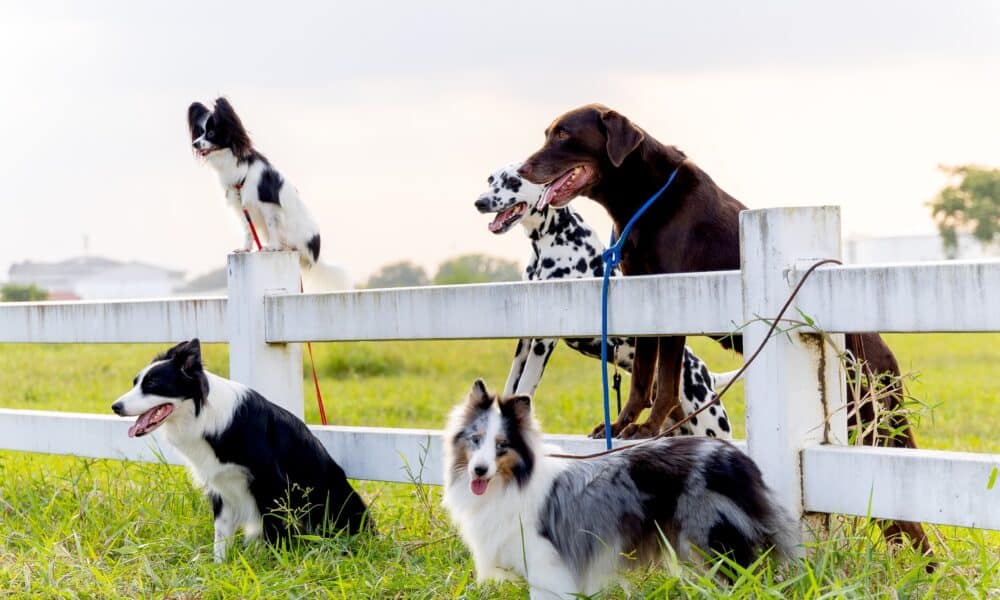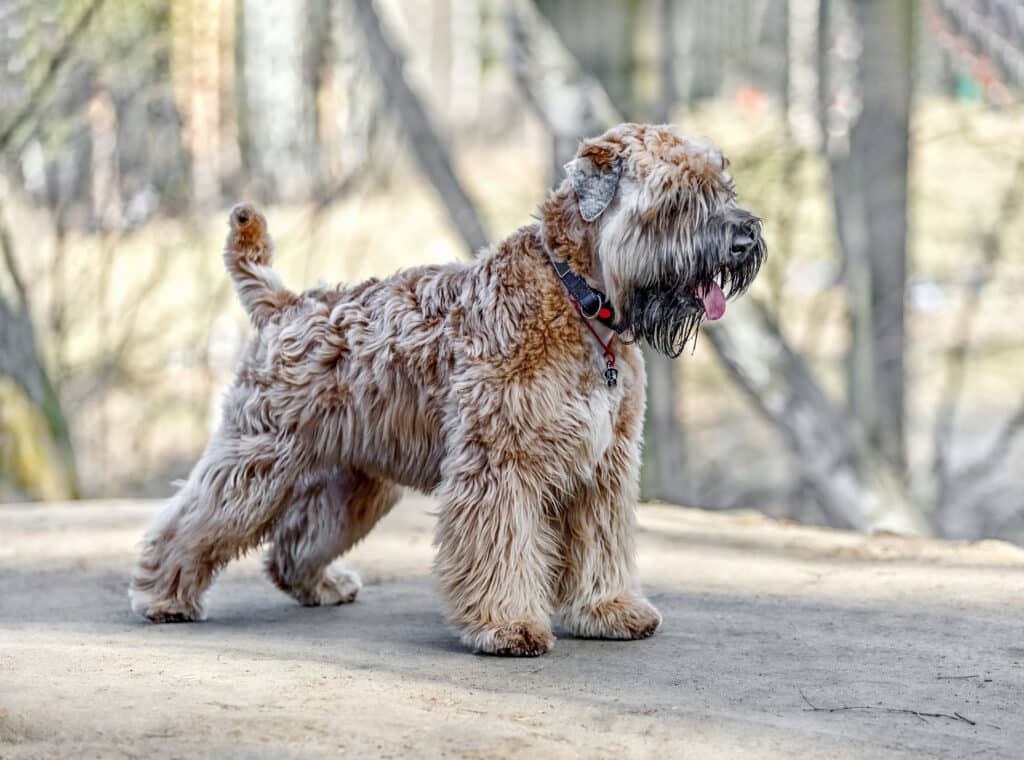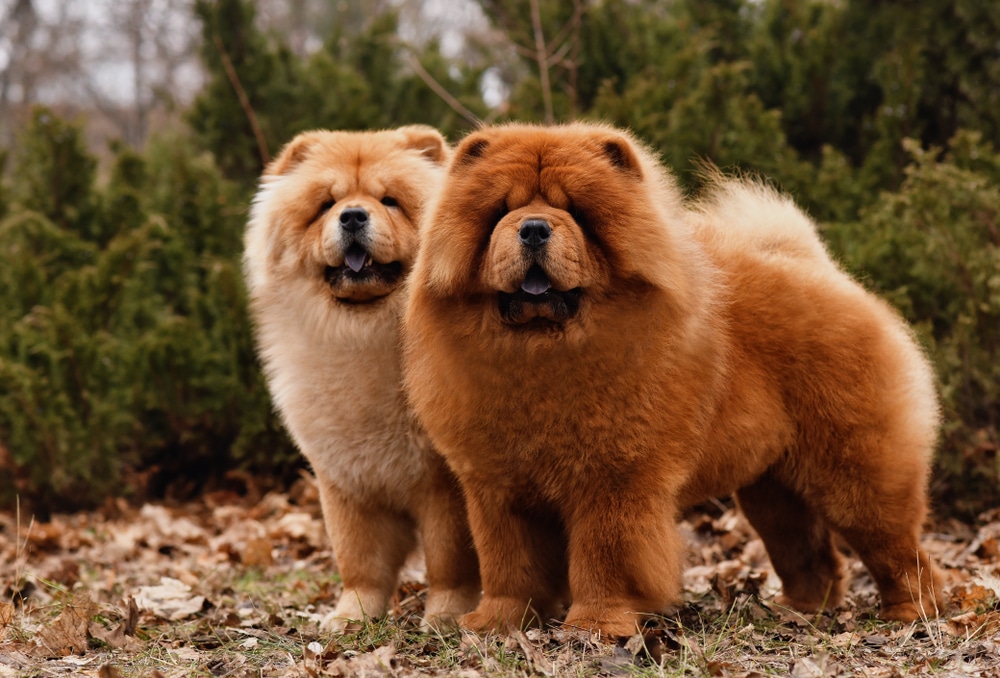- July 30, 2024
Exploring the 7 Major Dog Groups

Dogs are called ‘Man’s Best Friend’ for a variety of reasons – and a mutually beneficial relationship is one of them. And for thousands of years, we, hoomans, have been breeding dogs to perform specific tasks and distinct traits.
Today, as a result of these breeding practices, we have over 400 dog breeds around the world – all performing different tasks, and all with their unique characteristics.
In the US, the American Kennel Club (AKC) recognizes over 200 dog breeds, which they have organized in seven major dog breed groups.
In this article, we’ll talk about and explore each of these seven major dog breed groups and how this knowledge can be beneficial when choosing the right dog for you.

What Are Dog Breed Groups?
Dog breed groups are established by AKC for when they officially recognize a dog breed. They then assign the breed to one of the seven groups that best represent the breed’s characteristics and traits they were originally bred for.
Furthermore, at AKC dog shows, dogs are organized depending which group they belong to, are exhibited, and are then judged to be the best in each group, until seven dogs compete for the coveted ‘Best in Show’ title.
The seven major dog breed groups by AKC are:
- Sporting
- Hound
- Working
- Terrier
- Toy
- Herding
- Non-Sporting
Other than these seven groups, the AKC also has two other dog breed groups not belonging to the abovementioned, namely:
- Miscellaneous Class
- Foundation Stock Service (FSS)
While each dog breed is unique, they tend to fall into one of these dog breed groups. So, you can expect dogs in the same group to share something similar, mostly their dispositions, physical characteristics, and/or temperament.
7 Major Dog Breed Groups
Getting to know what a dog is originally bred for can really provide us with a lot of insights into a lot of things about dogs – their characteristics, temperament, energy level, and even their health and care requirements.
Furthermore, if you’re thinking of getting a dog, looking into a certain breed’s group can help you understand them better and see if they fit your lifestyle and preferences.
So, without further ado, let’s dig into and explore each major dog breed group!
1. Sporting Group

Dogs belonging to the Sporting Group were originally bred to assist hunters for hunting, retrieving, pointing, and setting – tasks that you’ll notice are part of their breed names.
So, you can expect a dog from the Sporting Group to have remarkable instincts in water and woods. In saying that, these dogs are also highly trainable, active, and alert.
If you are ever thinking of getting a Sporting Group dog breed, then you must be someone with an active lifestyle or someone that can meet their daily exercise needs. These dogs love to run, swim, fetch, and any activity that will challenge their mental and physical traits.
Furthermore, many Sporting dogs have thick, water-repellent coats that are resistant to hunting conditions in lakes and other bodies of water.
Today, thanks to their intelligence and eagerness to perform a task, they’ve taken other roles such as therapy dogs, service dogs, and search and rescue dogs.
Dog Breeds Belonging To The Sporting Group
Here are some of the most notable members of the Sporting Group:
- American Water Spaniel
- Cocker Spaniel
- English Springer Spaniel
- English Cocker Spaniel
- English Setter
- Golden Retriever
- German Shorthaired Pointer
- German Wirehaired Pointer
- Irish Setter
- Labrador Retriever
- Pointer
Other members of the Sporting Group also include:
- Brittany
- Barbet
- Boykin Spaniel
- Bracco Italiano
- Chesapeake Bay Retriever
- Lagotto Romagnolo
- Nederlandse Kooikerhondje
- Nova Scotia Duck Tolling Retriever
2. Hound Group

The Hound Group is a diverse dog breed group, but they share the common trait that definitely sets them apart – their exceptional sense of smell used for hunting.
While they overlap with the Sporting Group in the sense that they are used for hunting, dogs belonging in the Hound Group are known for their powerful noses.
However, some dogs in the Hound Group don’t only rely on their sense of smell as their only strength. There are dogs in the Hound Group that use their amazing stamina and ability to spot preys from great distances to hunt, too.
Thanks to their amazing hunting abilities, these dogs are tenacious, intelligent, independent, and loyal. While they make amazing family pets for their loyalty, they can be quite tricky to train because they are intelligent but independent.
Like a Sporting Group dog, dogs in the Hound Group need a hooman with an active lifestyle and/or someone who has the time to meet their daily exercise needs. In addition, they also need regular mental stimulation because of their innate curiosity.
Furthermore, these dogs have a high prey drive, so living with another pet (that is smaller than them) might not be suitable, since these smaller pets can trigger their prey drive at any time.
Today, it doesn’t come as a surprise that dogs in the Hound Group are used for police work for their outstanding ability to pick up a scent!
Dog Breeds Belonging To The Hound Group
Here are some of the most notable members of the Hound Group:
- Afghan Hound
- American Foxhound
- Basenji
- Basset Hound
- Beagle
- Bloodhound
- Dachshund
- English Foxhound
- Greyhound
- Irish Wolfhound
- Whippet
Other members of the Hound Group also include:
- Bluetick Coonhound
- Borzoi
- Cirneco Dell’Etna
- Grand Basset Griffon Vendeen
- Norwegian Elkhound
- Otterhound
- Petit Basset Griffon Vendeen
- Pharaoh Hound
- Plott Hound
- Portuguese Podengo Pequeno
3. Working Group

Alert, intelligent, strong, protective, and watchful – these are just a few characteristics that dogs belonging in the Working Group have.
In saying this, Working Group dogs are bred to guard properties and flocks, pull sleds and carts, and perform water rescues.
So, you can say that these dogs are the canine version of blue-collar workers and you can expect them to get the job done!
Dogs belonging in the Working Group are loyal and will surely protect their families. And since they are intelligent, training isn’t as difficult.
Furthermore, unlike other dog breed group where the dogs vary in size, Working Group dogs are mostly medium to large-sized dogs.
So, if you ever think of owning a dog under the Working Group, remember that because of their size, obedience training and socialization are important. Furthermore, these dogs are active – both mentally and physically. So, they require plenty of enrichment and an enormous space to roam and run around.
Dog Breeds Belonging To The Working Group
Here are some of the most notable members of the Working Group:
- Akita
- Alaskan Malamute
- Bernese Mountain Dog
- Boxer
- Bullmastiff
- Cane Corso
- Doberman Pinscher
- German Pinscher
- Great Dane
- Mastiff
- Newfoundland
- Rottweiler
- Saint Bernard
- Samoyed
- Siberian Husky
- Standard Schnauzer
- Tibetan Mastiff
Other members of the Working Group also include:
- Anatolian Shepherd Dog
- Black Russian Terrier
- Boerboel
- Dogo Argentino
- Dogue de Bordeaux
- Greater Swiss Mountain Dog
- Komondor
- Kuvasz Leonberger
- Leonberger
4. Terrier Group

The term “Terrier” originated from the Latin word “Terra” meaning “Earth”, which aptly describes what these dogs were originally bred for. They were bred to hunt and kill rodents and other vermin. However, “bully” breeds under this dog breed group were bred for bull-baiting.
“Feisty” and “energetic” – two words that best describe dogs belonging in the Terrier dog breed group.
These dogs are intelligent, but without proper training, their stubbornness can largely influence them. And they can develop unwanted habits like digging, destroying things at home, and even nuisance barking.
So, if you think of getting a Terrier Group dog, make sure that you have the time and patience to train them.
Dogs belonging in the Terrier Group vary in size – from small lapdogs to larger, more intimidating breeds. However, no matter their size, they always carry with them their big-dog attitude.
Furthermore, while most Terrier Group dogs are known for their dense, wiry coat, some have soft, silky hair and short, smooth coats.
Today, Terrier Group dogs, while still very good at rooting out vermin, have become popular companion dogs, especially the bully breeds.
Dog Breeds Belonging To The Terrier Group
Here are some of the most notable members of the Terrier Group:
- Airedale Terrier
- American Staffordshire Terrier
- Australian Terrier
- Miniature Bull Terrier
- Miniature Schnauzer
- Scottish Terrier
- Soft Coated Wheaten Terrier
- Staffordshire Bull Terrier
Other members of the Terrier Group also include:
- Cairn Terrier
- Cesky Terrier
- Dandie Dinmont Terrier
- Glen of Imaal Terrier
- Sealyham Terrier
- West Highland White Terrier
5. Toy Group

Dogs in the Toy Group may be short and small, but they definitely have BIG personalities! They are affectionate, sociable, and can easily adapt to a wide range of lifestyles.
And you might think that with their size, they’ll be less energetic, but that’s where you’re wrong! Because their small bodies contain boundless energy and a charm that you just can’t deny!
With such characteristics, dogs belonging in this dog breed group are perfect for first-time dog owners because they can adapt to their owner’s lifestyle.
Furthermore, if you’re someone who lives in the city, then a dog from the Toy Group is perfect for you since they don’t require much space and can live well in smaller apartments.
The origin of dogs belonging to the Toy Group vary. Some are lap-sized version of other dog breeds, such as Terriers and Poodles, while others were bred specifically to provide hoomans with small and delightful companions.
Dog Breeds Belonging To The Toy Group
Here are some of the most notable members of the Toy Group:
- Cavalier King Charles Spaniel
- Chihuahua
- Chinese Crested
- Italian Greyhound
- Maltese
- Papillon
- Pekingese
- Pomeranian
- Pug
- Toy Poodle
- Shih Tzu
- Yorkshire Terrier
Other members of the Toy Group also include:
6. Herding Group

The Herding Group is the latest dog breed group added by AKC in 1983. This is because all dogs from this group were once from the Working Group because they share many similarities.
However, dogs belonging in the Herding Group’s primary purpose is to “move” or herd livestock, like sheep and cattle, and work closely with their human shepherds.
Other notable traits that set the dogs in the Herding Group apart is their natural intelligence, responsiveness, and awareness of other animals. And instead of a high prey drive, these dogs have the drive and natural ability to keep livestock under their watch and control.
Dogs belonging to this dog breed group are naturally intelligent, have high energy levels, are eager to please, alert, and are quick to learn.
You can say that they have a strong “work ethic” and take herding seriously. Sometimes, a little too serious, that families with Herding dogs share stories of their dogs herding their other pets, and even children!
So, make sure you are able to provide constant mental and physical stimulation for a dog belonging in the Herding Group.
Dog Breeds Belonging To The Herding Group
Here are some of the most notable members of the Herding Group:
- Australian Cattle Dog
- Australian Shepherd
- Bearded Collie
- Belgian Malinois
- Border Collie
- Cardigan Welsh Corgi
- Collie
- German Shepherd Dog
- Pembroke Welsh Corgi
- Shetland Sheepdog
Other members of the Herding Group also include:
- Belgian Laekenois
- Bergamasco
- Berger Picard
- Bouvier des Flandres
- Briard
- Canaan Dog
- Mudi
- Swedish Vallhund
7. Non-Sporting Group

You might ask, “what do dogs in the Non-Sporting Group have in common?” Well, there’s really only three things that come to mind: a rich and fascinating history, wet noses, and four legs!
Dogs belonging in this dog breed group do not fit into any categorization in the six other groups. And they vary in size, shape, and temperament. So, you can say that they’re all at both ends of the spectrum, and everything in between!
If you’re thinking of owning a dog from the Non-Sporting Group, then you have a variety to choose from, depending on your personal preferences and lifestyle.
Some dogs in the Non-Sporting Group are highly active, but there are some with low energy levels and don’t require that much exercise and playtime.
Dog Breeds Belonging To The Non-Sporting Group
Here are some of the most notable members of the Non-Sporting Group:
- Bichon Frise
- Boston Terrier
- Bulldog
- Chinese Shar-Pei
- Chow Chow
- Dalmatian
- French Bulldog
- Poodle
- Shiba Inu
Other members of the Non-Sporting Group also include:
Other Dog Breed Groups

Aside from the seven major dog breed groups, AKC also has two other dog breed groups. The dogs in these groups don’t share anything in common in terms of the tasks or traits they were originally bred for, their size, shape, or personality.
What they do have in common is that they are not yet officially recognized breeds by AKC, and they’re the following:
1. Foundation Stock Service (FSS)
Dogs belonging to the Foundation Stock Service (FSS) are breeds that are starting their journey to become fully recognized and accepted breeds by AKC.
The minimum requirement for a dog breed to be under this group is to have an established registry for a minimum of 40 years.
According to AKC, this program or dog breed group is not open to “rare” breeds that are variations of registrable breeds or a cross between AKC-recognized breeds.
Currently, there are a total of 70 dog breeds under the FSS dog breed group. And some of dog breeds belonging to this group that you might be familiar with include:
- American Bulldog
- Australian Kelpie
- Catahoula Leopard Dog
- Caucasian Shepherd Dog
- German Spitz
- Jindo
- Working Kelpie
2. Miscellaneous Class
The Miscellaneous Class is a dog breed group made up of dog breeds that are currently part of AKC’s Foundation Stock Service (FSS). They either have not yet been officially recognized by the organization or placed in one of the seven major dog breed groups.
Currently, AKC has a total of 11 dog breeds under the Miscellaneous Class, and they are the following:
- Danish-Swedish Farmdog
- Basset Fauve de Bretagne
- Dutch Shepherd
- Japanese Akitainu
- Kai Ken
- Norrbottenspets
- Peruvian Inca Orchid
- Portuguese Podengo
- Russian Tsvetnaya Bolonka
- Small Musterlander Pointer
- Teddy Roosevelt Terrier
Tags
What do you think?
Related Articles

New Puppy Checklist: Gear You’ll Need for Your New Dog
Getting a new puppy is really exciting, but before you welcome them home, it’s important to prepare your space for them. Since puppies need a

How Big Do Mini Poodles Get? Vet Reviewed Average Weight & Growth Chart – Dogster
The information is current and up-to-date in accordance with the latest veterinarian research. Learn more » When you buy a Miniature Poodle, you might not

Can Police Dogs Smell Nicotine? Vet Verified Facts & Info – Dogster
The information is current and up-to-date in accordance with the latest veterinarian research. Learn more » While cigarette sales have been declining steadily for decades,

How Old Is 5 in Dog Years? Vet-Approved Guide to Each Size of Dog – Dogster
The information is current and up-to-date in accordance with the latest veterinarian research. Learn more » A common method for calculating a dog’s age is

